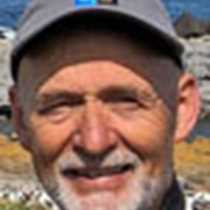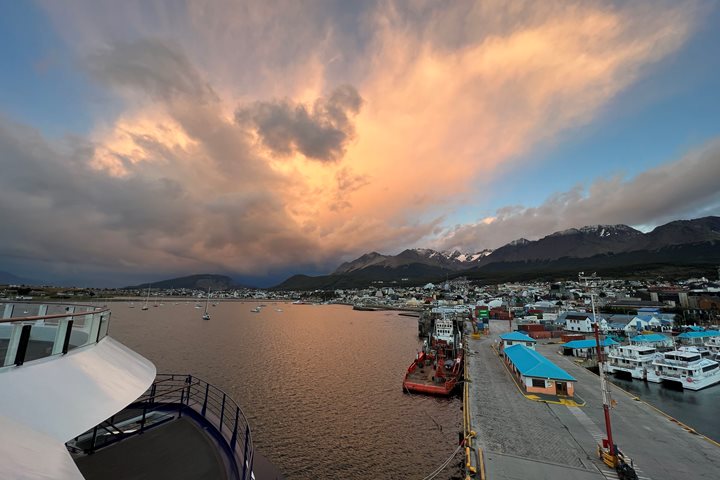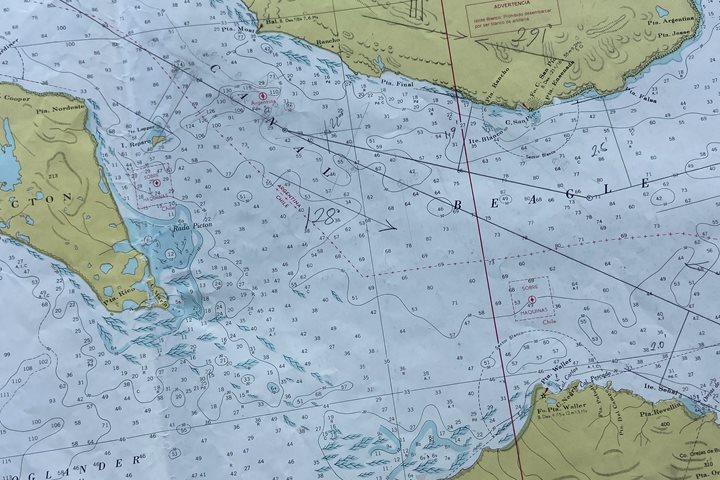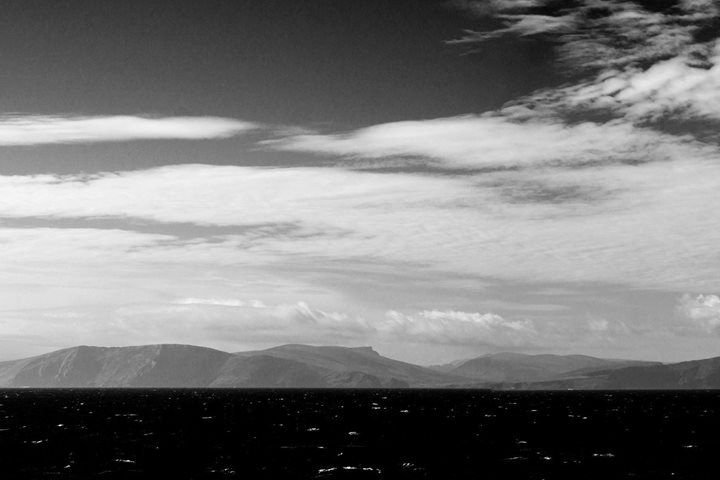We woke up just as National Geographic Explorer had anchored at Brown Bluff, located on the east side of Tabarin Peninsula. This was our first and only opportunity on this voyage to set foot on the Antarctic continent, and most of the guests chose to do so. Brown Bluff got its name from the brown rocks that dominate the cliffs above the beach. This morning the ground was covered with a thin layer of new-fallen snow, which gave a decorative texture to the landscape. This is an important nesting site for gentoo as well as Adélie penguins. The Adélies start their breeding season before the gentoos, and the majority of penguins onshore were gentoos. We also saw some Antarctic fur seal males and one single Weddell seal hauling out on the beach. A group of crabeater seals and a couple of leopard seals were resting on a small iceberg near the beach. Many of the guests chose to take a Zodiac cruise after the visit on shore and got a great view of the leopard seal.
In the afternoon naturalist Eric Guth was scheduled to give a lecture on snow and ice titled “The history of a snow crystal.” However, just as his talk was to start, we heard expedition leader Lisa Kelley sounding on the PA-system: “Killer whales ahead!” This was close to Rosamel Island in Erebus & Terror Gulf, at the entrance to the Weddell Sea. The observation decks were soon filled with eager guests. These killer whales had been spotted by Bob Pitman and Lisa Ballance, two killer whale scientists who are aboard conducting observations and also putting satellite tags on killer whales for scientific purposes. They also share their extensive knowledge on killer whales with the guests. Today the team of scientists and National Geographic Explorer staff were fortunate to successfully deploy tags on two different whales, for the first time this year!
After the encounter, Eric Guth resumed a highly instructive presentation of snow, ice, and the impact of glacial activity on the landscape. Just as Eric had finished, another message sounded: “More killer whales, and they are performing a spectacular show just ahead of the ship!”
Once again we ran out on deck. And what a show we witnessed! Just as we came out, 30-40 killer whales were actively chasing and harassing penguins. There are five types of killer whales in Antarctic waters, and we learned that these animals were small “type B.” It was easy to see that the individuals of the group cooperated their efforts, and the event went on and on for a couple of hours. Small type B killer whales are suspected to feed mainly on fish, and occasionally they snack on penguins. But today they were just tormenting the penguins. At very close range we observed how a poor little Adélie penguin was chased, grabbed, and tossed into the air a few times, but we did not observe the orcas feeding on them, although many penguins were obviously killed. Nature is sometimes brutal and fascinating at the same time. The highly dramatic acrobatics went on and on, and the Recap of the day was wisely called off. Many a memory card was filled to capacity, but the rare drama we witnessed this afternoon is an experience we won’t soon forget.









